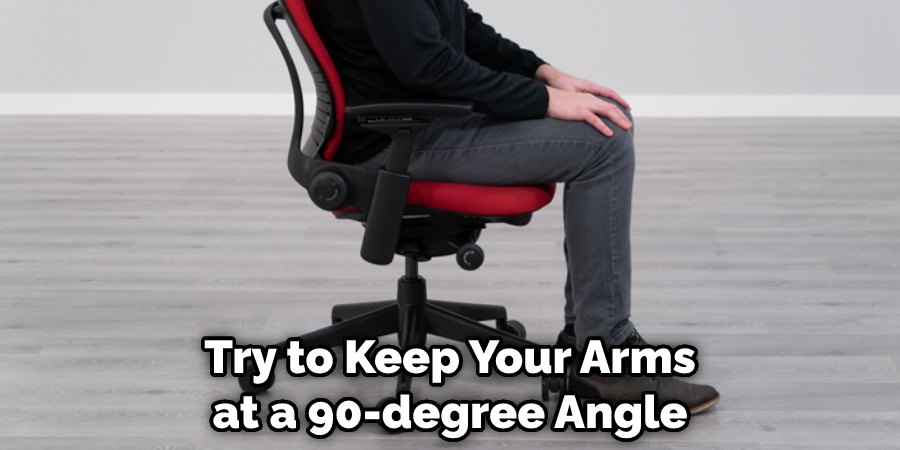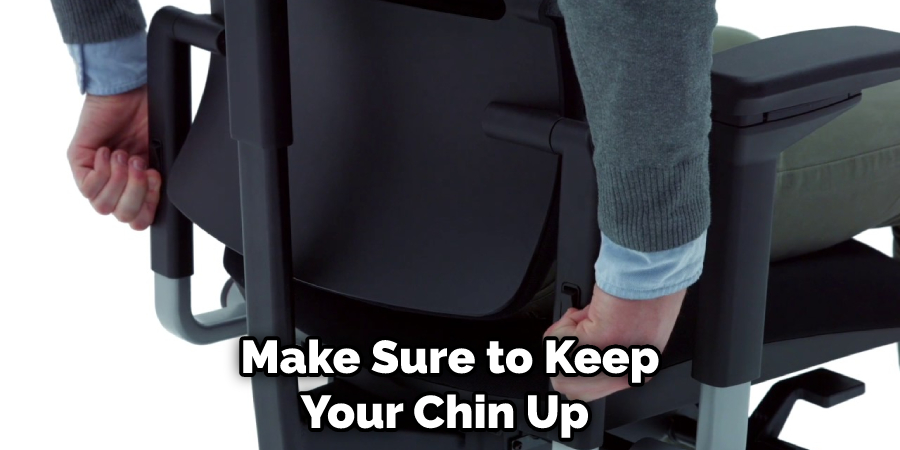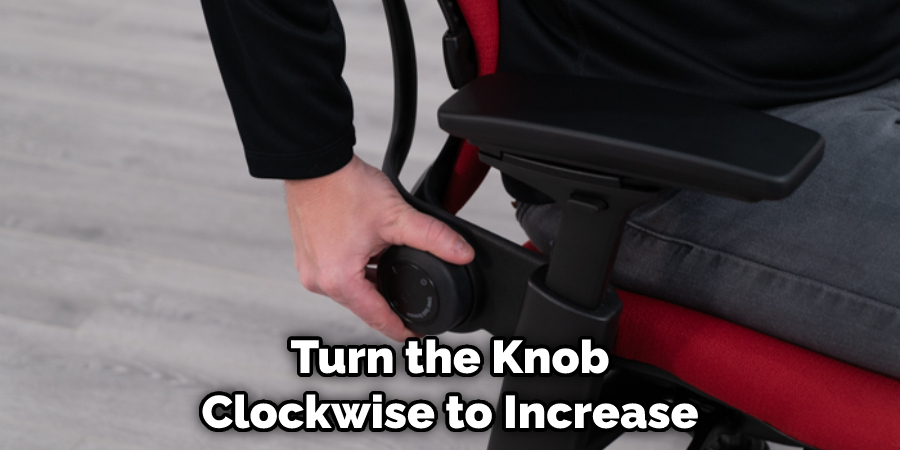Did you know that the way your office chair is adjusted can affect your productivity, comfort, and even health? If you’re not getting the most out of your chair, it may be time to make some adjustments. Many people spend hours at a time sitting in an office chair.

If you are one of those people, it is important to make sure that your chair is adjusted correctly so that you can maintain good posture and minimize the risk of injury. In this blog post, we will show you how to adjust steelcase office chair so that it is comfortable and fits your body size. Let’s get started!
What Is the Twist Knob on the Bottom of Office Chairs for?
The twist knob on the bottom of office chairs is used to adjust the height of the seat. If you sit too low in your chair, it may be difficult to reach your desk. On the other hand, sitting too high can cause poor posture and put a strain on your lower back.
To find the right height for you, start by sitting in the chair with your feet flat on the floor. Your thighs should be about parallel with the floor, and your arms should rest comfortably at a 90-degree angle when typing or using a mouse. Once you have found the correct height, use the twist knob to lock it in place.
How Do You Adjust Steelcase Office Chair Arms?
Steelcase office chairs come with adjustable armrests that can be moved up and down, forward and back, and in or out. To adjust the armrests, first, lift up the arm pads.
Then adjust the arms to a comfortable position that allows you to rest your arms at an approximately 90-degree angle while using the keyboard or mouse. When you have found the right height, use the adjustment knobs underneath each arm pad to lock them into place.

10 Methods How to Adjust Steelcase Office Chair
1. Check the Back Support.
The first thing you should do is check to see if your chair has the proper back support. If not, you may need to adjust the backrest or add a lumbar support cushion. If your chair does have back support, make sure it is set to the correct height and angle for your body. Try to keep your spine in a neutral position when sitting.
2. Adjust the Seat Height.
Next, you’ll want to adjust the seat height so that your feet are flat on the floor and your thighs are parallel to the ground. You may need to use a footrest if your chair does not have a height-adjustment feature.
If your feet do not reach the floor, this can cause discomfort and pain in your legs. Although the ideal seat height may vary depending on your body type, a good rule of thumb is to sit so that your elbows are at the same level as your desk.
3. Adjust the Seat Depth.
You’ll also want to make sure that the seat depth is adjusted properly. This setting should allow you to sit all the way back in the chair with your back against the backrest and your knees at a 90-degree angle.
While sitting in the chair, you should be able to fit two fingers between the back of your knee and the seat. Make sure to adjust the seat depth until you find a comfortable position.
4. Adjust the Armrests.
If your chair has adjustable armrests, be sure to position them so that your shoulders can relax and your elbows can rest comfortably at your sides. If your chair does not have adjustable armrests, you may want to invest in an ergonomic chair with this feature.
Try to keep your arms at a 90-degree angle when typing or using a mouse. Make sure to use the knobs underneath each arm pad to lock them into place.

5. Adjust the tilt tension.
The tilt tension controls how much resistance there is when you lean back in your chair. If it’s too loose, you may find yourself tipping over backward; if it’s too tight, it may be difficult to lean back at all. Adjust the tilt tension until it feels just right. Try to find a balance between comfort and stability. While you’re at it, check to see if the chair has a tilt lock feature; this will help keep your chair upright.
6. Adjust the Tilt Lock.
The tilt lock prevents the chair from tilting backward beyond a certain point. If it’s not locked, you may find yourself tipping over backward; if it’s locked too tight, it may be difficult to lean back at all.
Adjust the tilt lock until it feels just right. If your chair has a tension knob, it will adjust the tilt lock as well. Although it’s not necessary, you may want to use both settings for optimal comfort and support.
7. Adjust the Backrest Angle.
The angle of the backrest can be adjusted to provide additional support for your lower back or to allow you to recline further backward in the chair. Experiment with different angles until you find one that feels comfortable for you.
While you’re at it, make sure to adjust the tension knob until you find a balance between comfort and stability. Make sure to use the knobs underneath each arm pad to lock them into place.
8. Adjust the Headrest Height and Angle.
If your chair has a headrest, be sure to adjust it so that your head is supported comfortably without putting any pressure on your neck or shoulders. You may also want to adjust the angle of the headrest for additional comfort or support.
If your chair does not have a headrest, you can purchase an ergonomic one that attaches to the back of your chair. Try to keep your head and neck in a neutral position when sitting.
9. Check the Lumbar Support
The lumbar support on a Steelcase office chair should be adjustable so that you can find the perfect position for your lower back. If the lumbar support is not adjustable, then you may need to look for another chair. If the lumbar support is adjustable, then make sure to adjust it so that your lower back is supported comfortably. Experiment with different settings until you find one that feels good for you.
10. Check the Headrest
The headrest on a Steelcase office chair should be adjustable so that you can find the perfect position for your head and neck. If the headrest is not adjustable, then you may need to look for another chair. While you are adjusting the headrest, make sure to keep your chin up and your posture straight. This will help keep your neck in a neutral position throughout the day.

By going through these ten steps, you can ensure that your Steelcase office chair is adjusted correctly so that you can move around in it comfortably and with ease.
After you’ve adjusted your chair, make sure to take regular breaks throughout the day to stretch out your muscles and prevent fatigue. This will help keep you productive and avoid long-term health issues related to sitting for too long.
7 Secret Tips While Adjusting Steelcase Office chair
- Adjust the seat height, so your feet rest flat on the floor and your thighs are parallel to the ground.
- Adjust the backrest angle so that it supports your lower back comfortably.
- Adjust the tilt tension, so it’s not too tight or too loose.
- Adjust the tilt lock, if available, for added stability.
- Make sure to use the knobs underneath each arm pad to lock them into place.
- Check and adjust lumbar support and headrest if applicable, for optimal posture and comfort.
- Take regular breaks throughout the day to stretch out your muscles and prevent fatigue.
By following these steps, you can ensure that your Steelcase office chair is adjusted correctly so that you can work in it comfortably and with ease. This will help keep you productive and prevent any long-term health issues related to sitting for too long. By taking the time to adjust your chair correctly, you’ll be able to enjoy more comfort and support as you work.
What Are Steelcase Office Chair Lumbar Support Settings?
Most Steelcase office chairs come with adjustable lumbar support settings. These are designed to provide additional back support by contouring to your natural spine curve. To adjust these settings, look for a small knob on the side of the chair near where your lower back would rest.
Turn the knob clockwise to increase the lumbar support and counterclockwise to decrease it. Make sure to adjust the lumbar support until you find the level of comfort and support that is right for you.

When adjusting your chair’s lumbar support settings, make sure to keep your posture in mind. Your lower back should be supported comfortably without putting too much pressure on it.
As with any ergonomic setting, make sure to take regular breaks throughout the day and stretch out your muscles to avoid any long-term health issues related to sitting for too long. By taking the time to adjust your chair correctly, you’ll be able to enjoy more comfort and support as you work.
Conclusion
If your office chair isn’t comfortable, it can lead to back pain and a decrease in productivity. Luckily, there are many ways to adjust your Steelcase office chair so that it fits you perfectly.
In this article on how to adjust steelcase office chair we’ve shown with a few simple adjustments, you can have an ergonomic chair that helps improve your posture and alleviate back pain. Give these tips a try the next time you’re sitting in your Steelcase office chair.

